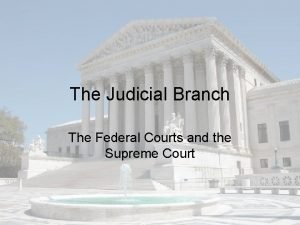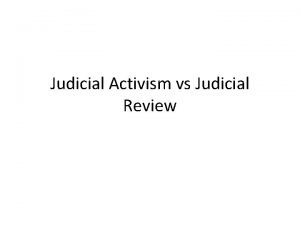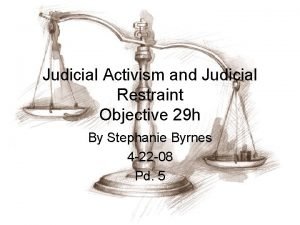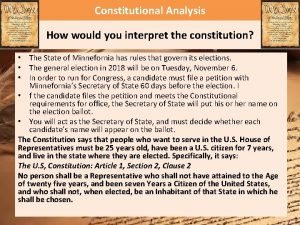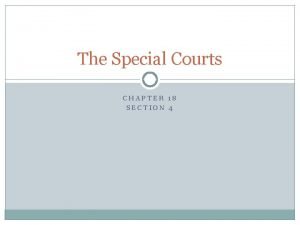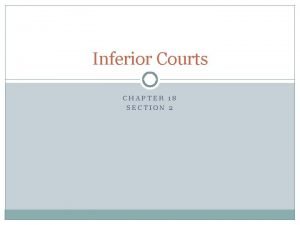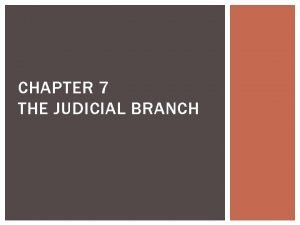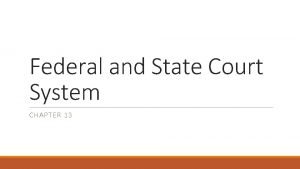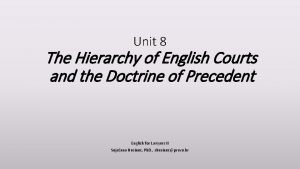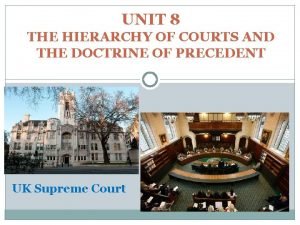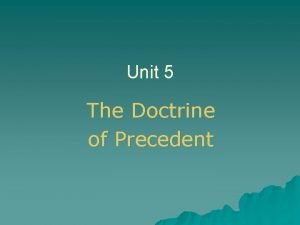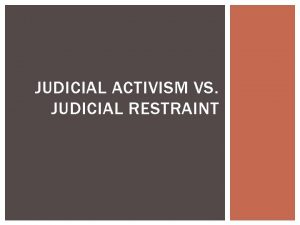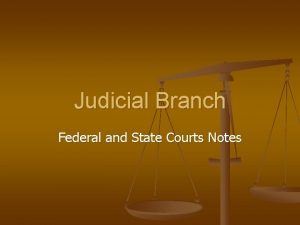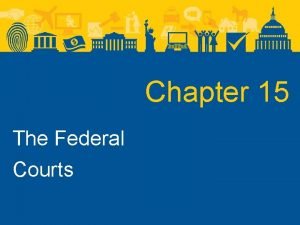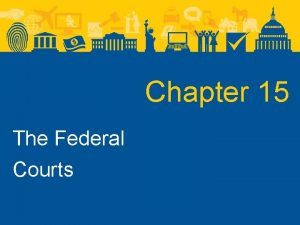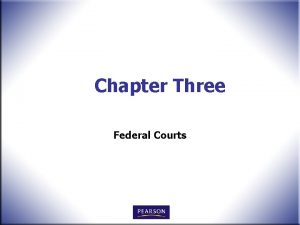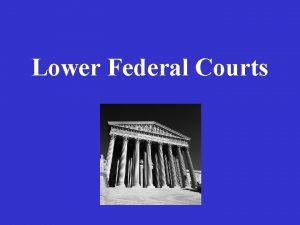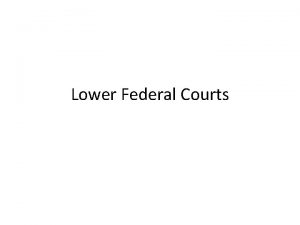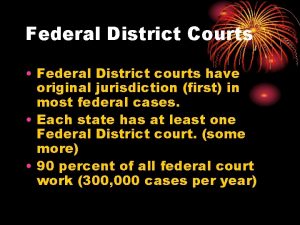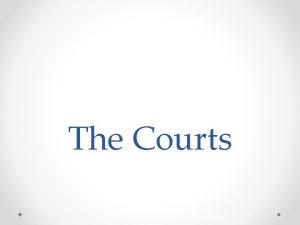Chapter 8 The Federal Courts and the Judicial











- Slides: 11

Chapter 8: The Federal Courts and the Judicial Branch Section 1: The Federal Court System (pgs. 220 -225)

The American Court System • Judicial independence is a cornerstone of our judicial system b/c it helps safeguard the rule of law. • The rule of law is the belief that no person is above the law & all people are entitled to equal justice. • The courts are where people settle disputes. • The courts determine whether a law has been broken, they decide how to provide relief for those who have harmed, & they determine the meaning of a particular law or of the Constitution itself.

A Dual Court System • The Constitution created a dual court system with the state’s courts and the national courts. • The vast majority of cases are heard in state courts & state courts have their power from state constitutions. • The federal courts get their power from the U. S. Constitution. • If state courts contradict each other, the federal courts get to rule on which one is correct.

Jurisdiction • Jurisdiction means the authority to hear and decide a case. • In general state courts hear matters of state law and federal courts hear cases that involve the Constitution or other federal laws. • See the chart on page 221 for federal courts exclusive jurisdiction. • Concurrent jurisdiction refers to cases that fall under both state and federal jurisdiction. This applies when cases involve residents of different states & the amount of money is over &75, 000.

Court System Vocab • The plaintiff is the person making the legal complaint and they can file their case in federal or state court. • The defendant is the person against whom the complaint is filed and they can insist that the case be in federal court. • The court that first hears the case is said to have original jurisdiction. • If the case is appealed to a higher court, it then moves to the court that has appellate jurisdiction.

Structure of the Federal Court System • The Constitution only sets up the Supreme Court with Congress to establish inferior courts. • The Judiciary Act of 1789 proposed a 3 -tiered structure for the federal courts. • They were district courts, circuit courts, and the Supreme Court. • This has remained since 1789.

District Courts • These courts are spread throughout the nation and serve as the trial courts of the federal system. • This means that they have original jurisdiction over nearly all criminal laws like murder & kidnapping. • Civil cases involve disputes between private individuals over money or property. • There are 94 federal judicial districts— 89 in the 50 states & 5 more in D. C. & our territories.

Court of Appeals • These were called circuit courts b/c the judges would travel from district to hear cases. • Courts of appeals hear appeals from district courts and also from those federal agencies that have rule-making and rule-enforcement powers. • The U. S. is divided into 12 different circuits with a court of appeals in each circuit.

The Supreme Court • The Supreme Court is at the top of the federal court system and is mainly an appellate court. • The Supreme Court does have original jurisdiction in “cases affecting Ambassadors, and other public Ministers and Consuls, and those in which a State shall be a Party. ” • Congress sets the number of justices. • The Court received 8, 000 petitions a year and only hears around 100 a year.

Appointing Federal Judges • The Constitution allows the president the power to nominate federal judges and the Senate then must approve. • The nominee needs to have legal expertise. The American Bar Ass. (ABA) reports on their competence. • Today, presidents will only nominate judges that have the same party affiliation. • Democratic presidents usually appoint judges that use judicial activism, while republican presidents usually appoint judges that use judicial restraint. • Presidents usually check with the senators of the state the judge is from before they nominate the judge.

Checks and Balances • Judicial Review– started with Marbury v. Madison in 1803 • The appointment process— involving both the president and the Senate • Congress has the power to impeach and remove judges from office • Must federal judgeships permanent, to made rulings independent. • Judges pay can’t be reduced during their time in office. • Congress and the states can pass an amendment to check the judiciary.
 Judicial activism vs judicial restraint
Judicial activism vs judicial restraint Judicial restraint vs judicial activism
Judicial restraint vs judicial activism Judicial activism vs judicial restraint
Judicial activism vs judicial restraint Constitution
Constitution Judicial activism vs restraint
Judicial activism vs restraint The special courts
The special courts Section 2 guided reading and review the inferior courts
Section 2 guided reading and review the inferior courts Judicial branch vocabulary
Judicial branch vocabulary Chapter 13 federal and state court systems
Chapter 13 federal and state court systems Hierarchy of english courts
Hierarchy of english courts Courts hierarchy
Courts hierarchy Hierarchy of uk courts
Hierarchy of uk courts
